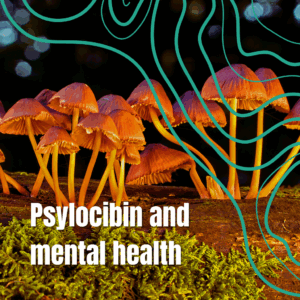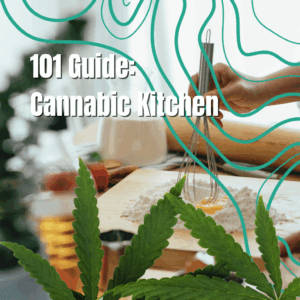

When someone wants to start cooking with marijuana, having a clear and simple guide makes all the difference. The “101 Guide: Cannabic Kitchen” breaks down the basics of cannabis cuisine so that anyone can learn to make tasty and safe cannabis-infused dishes. It teaches how to prepare ingredients, control dosage, and use cannabis effectively in cooking and baking.

This guide helps remove confusion about cannabic kitchen by explaining key techniques and safety tips. It is designed for beginners and experienced cooks alike who want to explore the culinary side of cannabis. With the right skills, they can enjoy the benefits of cannabic flavors and effects without guesswork or risk.
Knowing how to handle cannabis as an ingredient changes the cooking experience. Recipes and methods in this guide focus on responsible use and highlight how cannabis can enhance food in many ways. This practical approach makes cannabis cooking more accessible and enjoyable for all.
Key Takeways
-
- Clear steps simplify cooking with cannabis for any skill level.
-
- Understanding dosage and safety is essential for a good experience.
-
- Cannabis cuisine can be both enjoyable and controlled with the right methods.
Key Principles of Cannabic Cooking

Successful cannabic cooking depends on proper preparation and choosing the right ingredients. Two crucial factors are activating the cannabis for potency and matching the strain to the desired effects.
The Importance of Decarboxylation
Decarboxylation, or decarb, is the process that activates cannabis’s psychoactive and therapeutic compounds. Raw cannabis contains THCA and CBDA, which have limited effects. When heated, these compounds convert into THC and CBD, making them effective for cooking.
Heating cannabis at around 220°F (105°C) for 30-45 minutes usually completes decarb. This step is essential before infusing cannabis into oils or butter. If skipped, edibles will have weak effects because inactive compounds do not produce the expected results.
Decarb can be done in an oven or a specialized device. Proper decarboxylation ensures consistent potency and helps control dosage in cannabis edibles.
Selecting the Right Cannabis Strain
Choosing the right cannabis strain is vital for the intended culinary and medicinal outcome. Different strains contain varying levels of THC, CBD, and other cannabinoids, which affect flavor, aroma, and effects.
Indica strains often provide relaxing and sedative effects, making them suited for evening use. Sativa strains tend to offer energizing and uplifting effects, suitable for daytime cooking and consumption. Hybrid strains combine characteristics of both.
Flavor profiles also vary—some strains have earthy, citrusy, or piney notes. Matching strain flavor and potency to the recipe enhances the edible’s taste and experience.
Understanding the strain’s cannabinoid profile helps cooks dose accurately and achieve the desired effect, whether for pain relief, appetite stimulation, or relaxation.
For more detailed guidance, consider resources like the Cannabis Kitchen Cookbook.
Making Cannabic Ingredients

Preparing cannabis-infused ingredients involves extracting cannabinoids from the plant into fats like butter or oil. The process requires careful temperature control and time to capture the active compounds without destroying them. Proper storage is essential to maintain potency and prevent spoilage.
How to Make Pot Butter
Pot butter, or infused butter, is made by slowly cooking decarboxylated cannabis with butter. Decarboxylation means heating the cannabis first to activate THC and CBD. Once activated, the cannabis is simmered in butter over low heat for 2 to 3 hours, often using a double boiler or a slow cooker.
It’s important to keep the temperature below 200°F (93°C) to avoid burning off cannabinoids. Stir the mixture occasionally and strain it through cheesecloth to remove plant material. The butter will absorb the resin and cannabinoids, making it ready for cannabis-infused food recipes.
Creating Infused Oils
Infused oils use a similar technique, but with cooking oils like coconut, olive, or avocado oil. The cannabis is decarboxylated first and then infused in the oil over low heat, typically for 2 to 4 hours.
A double boiler or slow cooker helps maintain a steady temperature, usually under 245°F (118°C). Straining the oil removes plant bits, leaving a clear, cannabinoid-rich oil. Different oils can affect the flavor and texture of recipes, so choose based on the intended dish.
Storing and Preserving Infusions
Proper storage extends the shelf life of cannabis-infused ingredients. Both pot butter and infused oils should be kept in airtight containers to avoid exposure to air and moisture.
Refrigeration is recommended to slow down oxidation and prevent spoilage. Pot butter can last about 2 weeks in the fridge and up to 6 months in the freezer. Infused oils may last longer but should still be checked regularly for changes in smell or appearance.
Avoid heat and light, which break down cannabinoids over time and reduce potency. Labeling containers also helps track freshness and avoid accidental misuse.
For further reading on cannabis cooking techniques, check out The Cannabis Kitchen Cookbook.
Cannabic Kitchen
Cannabis can be used in many recipes, from sweet treats to savory dishes. Understanding how to prepare it correctly helps to control the effects and flavor. Proper techniques ensure the active compounds are released safely and effectively.
Cannabis Edibles Basics
Cannabis edibles are foods made by infusing cannabis extracts or oils into ingredients. The main active compound, THC, must be activated through decarboxylation—a process of heating cannabis to unlock its effects. This step is critical for potency.
Most edible recipes start by making cannabutter or cannabis oil, which can be used instead of regular butter or oil. These infused fats carry the cannabinoids into the food. It is important to measure doses carefully to avoid unpleasant experiences.
Edible effects take longer to start—usually 30 minutes to 2 hours—and last longer than smoked cannabis. Users should wait before eating more. Beginners are advised to start with low doses, often around 5-10 mg of THC.
Cannabis-Infused Dishes and Recipes
Common cannabis recipes include baked goods like brownies and cookies, which are the easiest to dose and prepare. Gummies and candies require specific techniques to mix cannabis extracts evenly. A weed gummies cookbook can provide step-by-step guides.
Savory dishes like pasta or sauces can be enhanced with cannabis oil, offering a subtle flavor. Hash, a concentrated form of cannabis, can also be incorporated, though it needs gentle heating to activate without burning.
Cooking times and temperatures matter. Too much heat destroys cannabinoids, so infusions are typically cooked at low or moderate heat. Recipes often stress patience and precision to balance taste, potency, and safety.
For detailed information on making cannabis edibles and recipes, references like Cannabis for dummies offer thorough guidance.
Dosage, Safety, and Responsible Use
Controlling dosage and knowing how to use cannabis safely are essential when cooking with it. Proper measuring helps manage the psychoactive effects, while avoiding common mistakes reduces health risks and ensures a better experience.
Measuring Potency and Serving Size
It is important to measure cannabis potency carefully. The amount of THC determines the strength of psychoactive effects. Beginners should start with low doses, often around 2.5 to 5 milligrams of THC per serving. Consistency is key, so use precise kitchen tools like scales or standard measuring spoons to maintain uniform potency.
Non-psychoactive cannabinoids like CBD can also affect the experience but do not cause a high.
Label edible servings clearly to avoid confusion. Keep dosage information visible so users know how much THC or other cannabinoids they are consuming. Tracking potency helps prevent overconsumption, which can cause discomfort or anxiety.
Avoiding Common Mistakes
Mistakes often happen when users misjudge potency or timing. Decarboxylation, the process of heating cannabis to activate THC, must be done properly. If not heated enough, edibles may lose potency.
Another error is eating too much too fast. Edibles take 30 minutes to 2 hours to take effect, so patience is needed. Overconsumption leads to strong psychoactive effects that can be unpleasant.
Keep cannabis edibles away from children and pets. Store them in labeled, sealed containers. Avoid mixing cannabis edibles with alcohol, as the combination increases risk. Proper knowledge and precaution help create a safe, controlled cannabis cooking experience.
For detailed guidelines, see information on product selection and dosing considerations.
Health Benefits and Considerations
Cannabis-infused food offers specific health effects due to cannabinoids like cannabidiol (CBD) and tetrahydrocannabinol (THC). People use these edibles for medical reasons but should also consider possible risks. The effects vary depending on dosage, individual sensitivity, and the cannabinoids present.
Medical Uses of Cannabis in Food
Cannabis-infused food is used to manage chronic pain by interacting with the body’s endocannabinoid system. It can reduce inflammation and ease discomfort without some side effects of traditional painkillers. People suffering from nausea, especially from chemotherapy, find relief through cannabis edibles. The slower digestion of food-based cannabis creates longer-lasting effects, which many patients prefer.
Anxiety reduction is another benefit, often linked to cannabidiol (CBD), a non-psychoactive compound in cannabis. Hemp-derived CBD is popular for calming effects without causing a high. Medical users often choose cannabis in food form for controlled dosing and discreet consumption.
Potential Risks and Side Effects
Cannabis-infused food can cause side effects like dry mouth, dizziness, or fatigue. High doses of THC, especially in edibles, may lead to increased anxiety or paranoia. The delayed onset of edible effects can cause users to consume too much, posing risks of overdose symptoms such as confusion or nausea.
Users should be cautious about dosage and avoid combining cannabis edibles with alcohol or other medications. Effects vary widely by individual weight, metabolism, and tolerance. Some people may experience allergic reactions or digestive upset from ingredients used in cannabis cooking. Proper labeling and clear dosing instructions are important for safe use.
For more detailed guidance on cooking and health aspects, see this Cannabis Kitchen Cookbook.

